 |
 |
 |
| |
Half with HIV in US have virus over 3 years before diagnosis--some groups lag overall trends - "Duration of infectiousness among persons with HIV diagnosed during 2012-2016"
|
| |
| |
Conference on Retroviruses and Opportunistic Infections (CROI), March 4-7, 2019, Seattle
Mark Mascolini
Time from HIV infection to diagnosis and from diagnosis to viral suppression both dropped in 2012-2016 across the United States, according to results of a 108,000-person CDC analysis [1]. But by 2016 an estimated half of HIV-infected people had the virus more than 3 years before diagnosis. Straight men and Hispanics had longer HIV diagnosis delays than other groups.
Centers for Disease Control and Prevention (CDC) researches who conducted this study defined two periods in which an HIV-positive person remains infectious and so can transmit HIV: (1) from HIV infection to diagnosis (I-to-D), and (2) from diagnosis to viral suppression (undetectable viral load) (D-to-VS) with antiretroviral therapy (ART). The first period can be shortened by diagnosing HIV as quickly as possible after infection, and the second can be trimmed by treating HIV rapidly and effectively.
A CDC team conducted this study to estimate durations of the two infectious periods, I-to-D and D-to-VS, to chart changes in these periods over the 2012-2016 study period, and to explore differences in these periods between HIV subgroups. They defined viral suppression as a viral load below 200 copies. The researchers estimated I-to-D with a method that traces a falling CD4 count in untreated people according to known trends related to sex, HIV transmission group, and age at infection. They estimated D-to-VS by measuring months from recorded HIV diagnosis to first viral load below 200 copies.
The analysis examined data from the CDC's National HIV Surveillance System from 27 jurisdictions through June 2018. The study group consisted of people at least 13 years old when diagnosed with HIV in 2012-2016. Everyone had at least one CD4 count and one viral load test after HIV diagnosis.
The study included 22,562 people diagnosed with HIV in 2012, 21,622 diagnosed in 2013, 22,093 diagnosed in 2014, 21,601 diagnosed in 2015, and 20,683 diagnosed in 2016. Across those 5 years, median I-to-D dwindled from 43 to 39 months to yield a 2012-2016 relative change of -9% and an estimated annual percentage change of -3%. Over the same 5 years, median D-to-VS dropped from 8 to 5 months for a 2012-2016 relative change of -38% and an estimated annual percentage change of -13.6%. Both estimated annual changes were statistically significant (P < 0.01).
Across the 2012-2016 study period, I-to-D fell more in women (39 to 31 months) than in men (44 to 40 months), but both drops were statistically significant (P < 0.05 for estimated annual percentage change). D-to-VS duration also fell significantly in both men and women (P < 0.05). I-to-D declined significantly for heterosexual men and women and for men who have sex with men (P < 0.05 for all) but not for male or female people who inject drugs. D-to-VS duration dropped significantly in all these groups.
Both I-to-D and D-to-VS fell significantly for whites, blacks, and Hispanics. D-to-VS dropped significantly in all age groups, but two age groups did not have significant declines in I-to-D: 35-to-44-year-olds and 13-to-24-year-olds.
Despite overall progress in shortening the two periods in which HIV-positive people can transmit the virus, the CDC team stressed that half of all analyzed people with HIV remained undiagnosed for more than 3 years after infection in the last study year, 2016. And two subgroups had longer delays in HIV diagnosis--heterosexual men (median 63 months) and Hispanics (median 45 months). Still, the researchers proposed that "shortened I-to-D and D-to-VS durations indicate some success" in achieving earlier HIV diagnosis and treatment in the United States.
Reference
1. Crepaz N, Song R, Hall I. Duration of infectiousness among persons with HIV diagnosed during 2012-2016. Conference on Retroviruses and Opportunistic Infections (CROI). March 4-7, 2019. Seattle. Abstract 153.
WEBCAST: http://www.croiwebcasts.org/console/player/41325?mediaType=slideVideo&
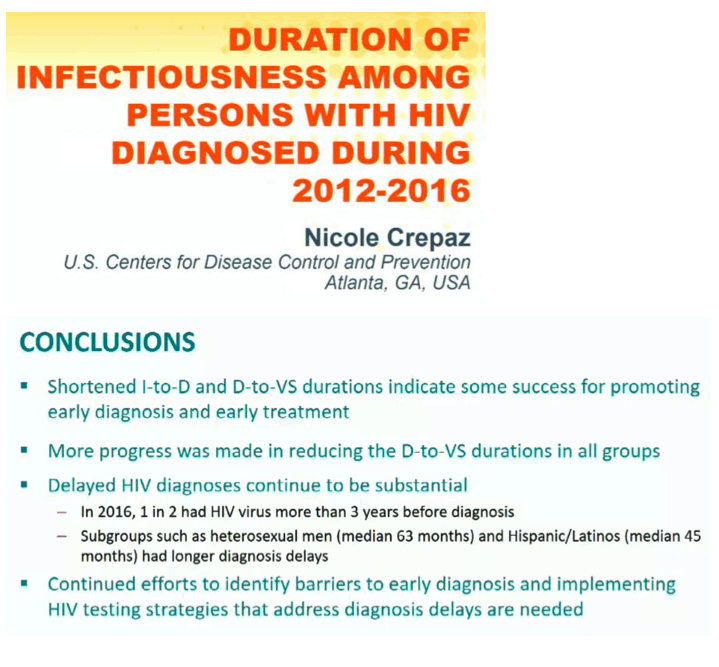
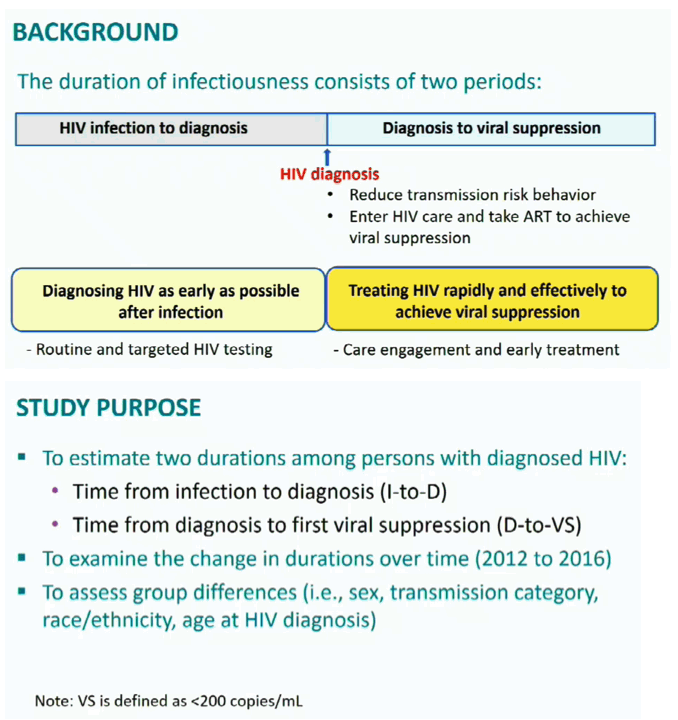
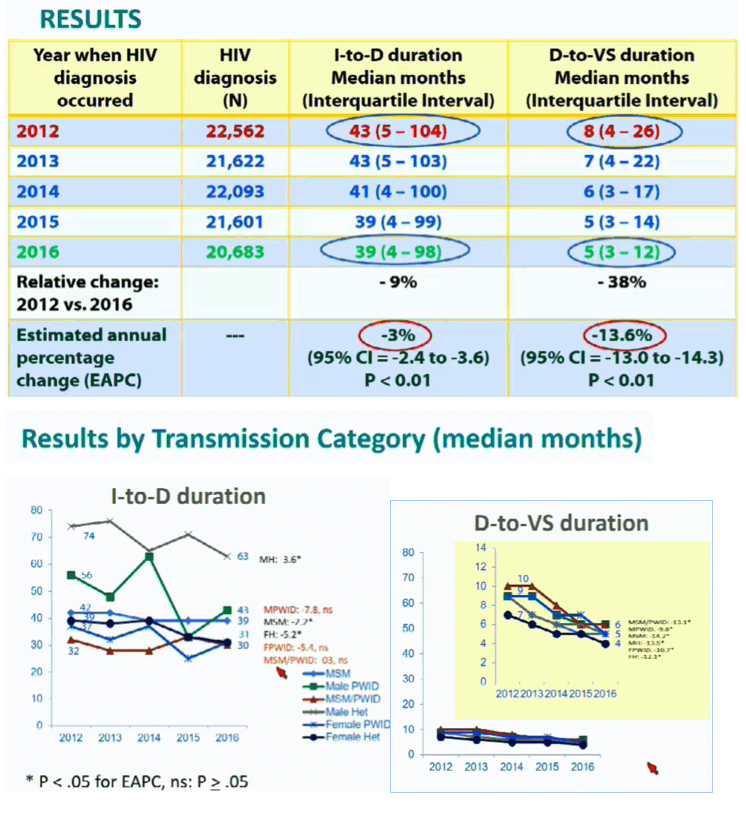
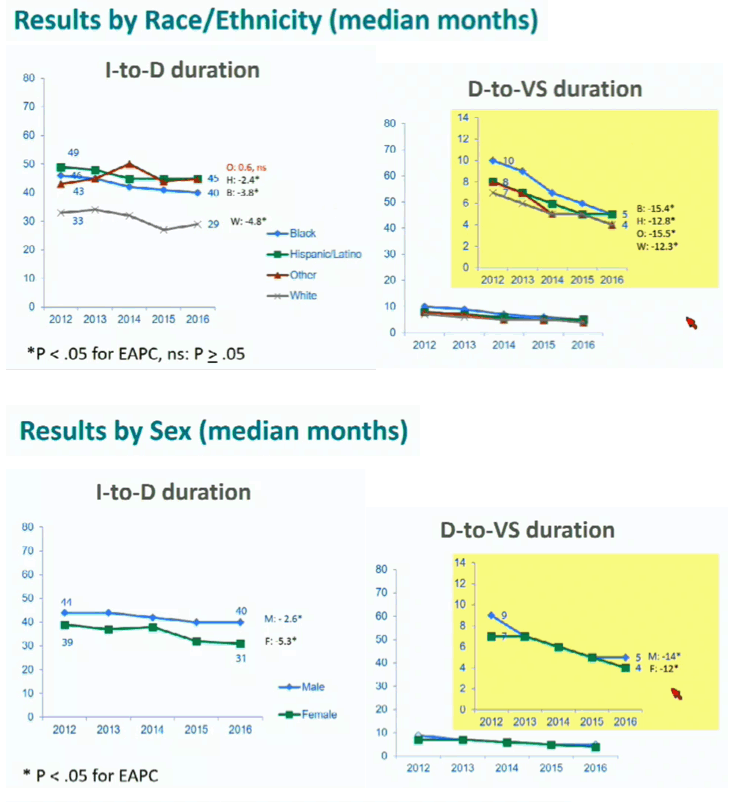
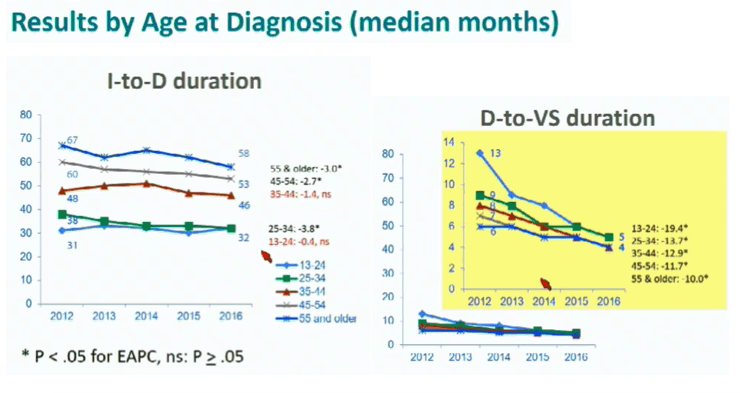
|
| |
|
 |
 |
|
|